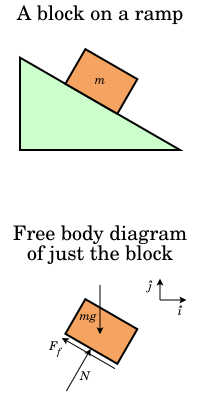Physics:Surface force
From HandWiki

Surface force denoted fs is the force that acts across an internal or external surface element in a material body. Normal forces and shear forces between objects are types of surface force. All cohesive forces and contact forces between objects are considered as surface forces. Surface force can be decomposed into two perpendicular components: normal forces and shear forces. A normal force acts normally over an area and a shear force acts tangentially over an area.
Equations for surface force
Surface force due to pressure
- , where f = force, p = pressure, and A = area on which a uniform pressure acts
Examples
Pressure related surface force
Since pressure is ,[1] and area is a ,
- a pressure of over an area of will produce a surface force of .
See also
References
 |
